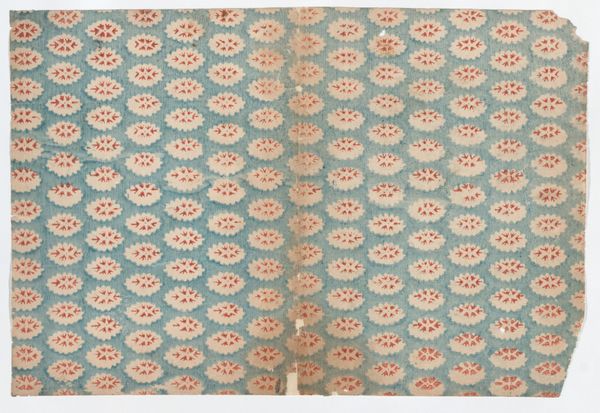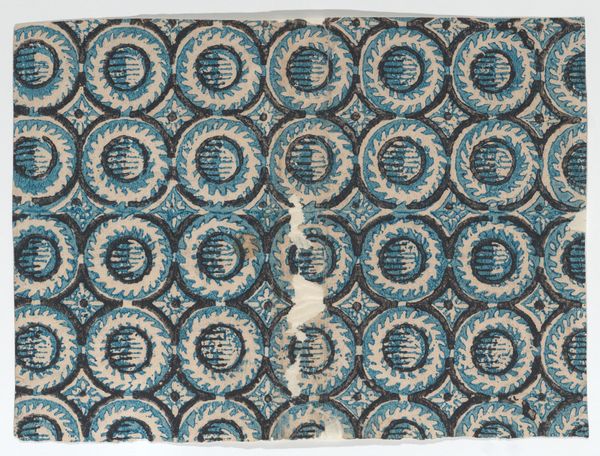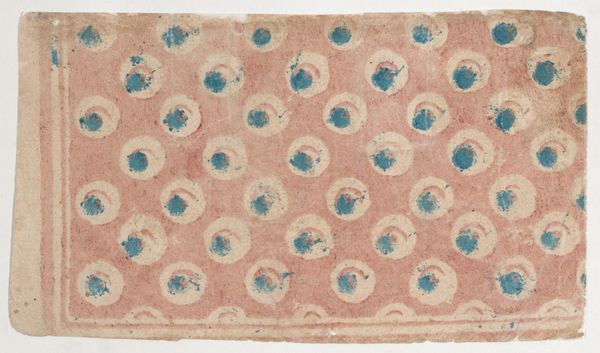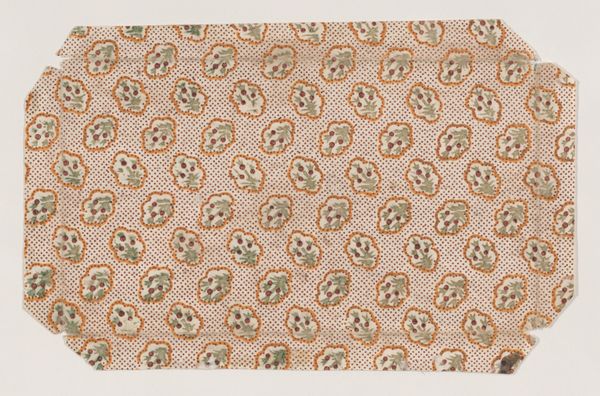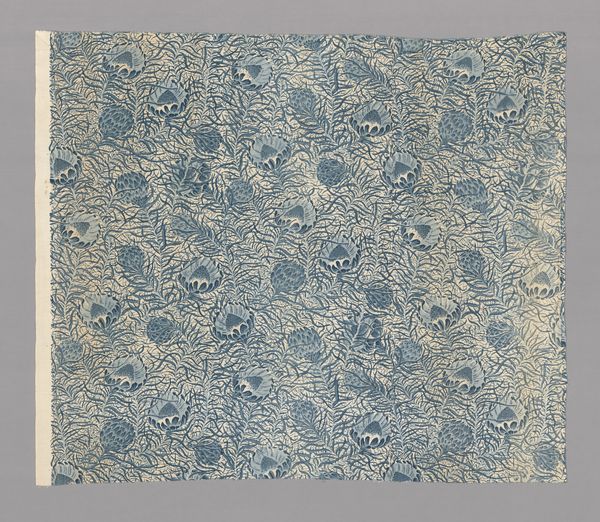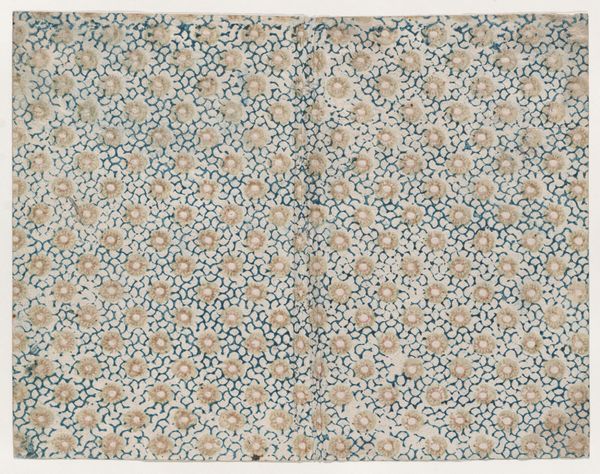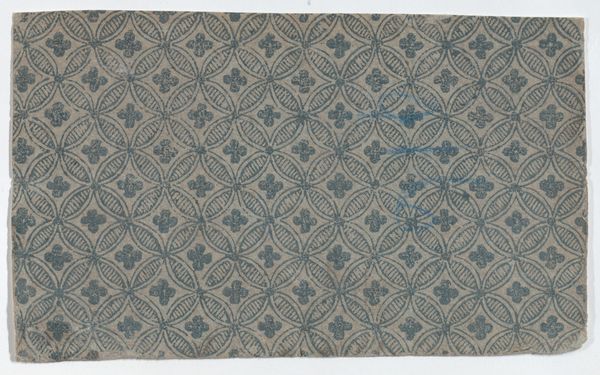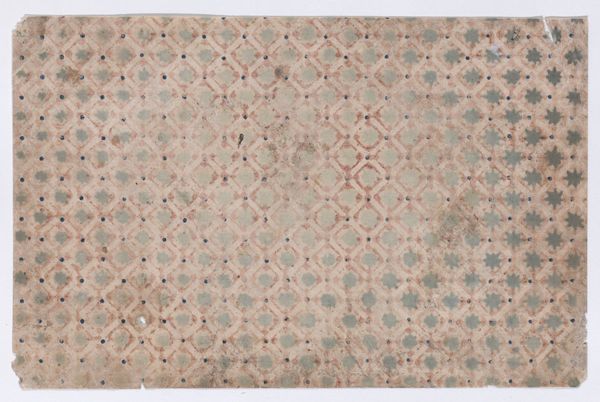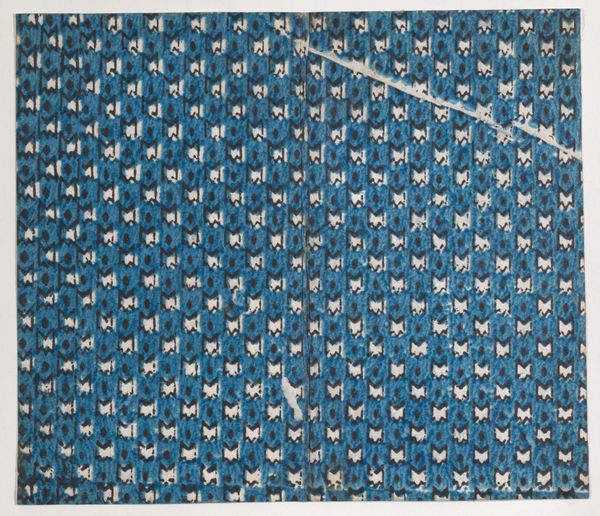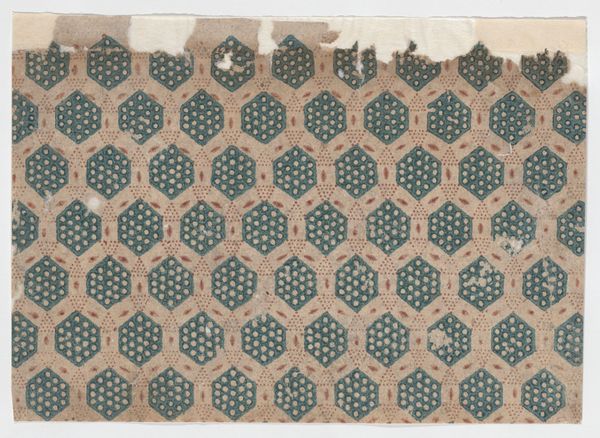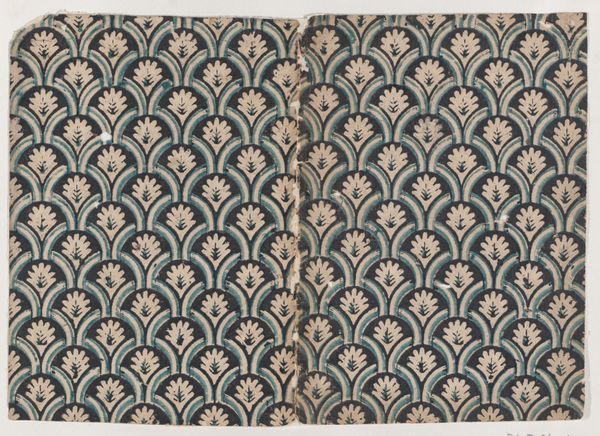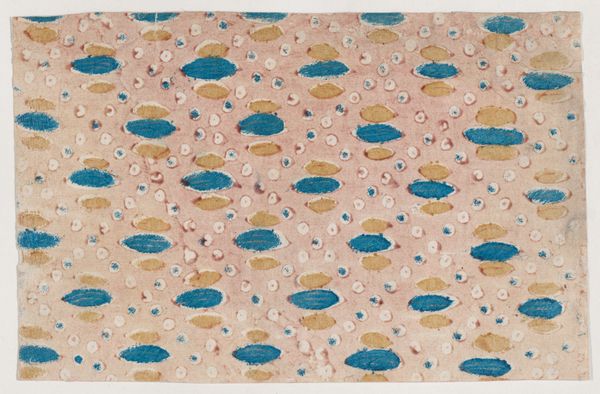
Book cover with overall pattern of dots and circles 1800 - 1900
0:00
0:00
drawing, print, textile
#
drawing
# print
#
textile
#
geometric
#
pattern repetition
#
textile design
#
decorative-art
Dimensions: Sheet: 7 9/16 × 9 13/16 in. (19.2 × 25 cm)
Copyright: Public Domain
Curator: Welcome! We're standing before an intriguing book cover originating from sometime in the 19th century, held within the esteemed collection of the Metropolitan Museum of Art. The piece, entitled "Book cover with overall pattern of dots and circles", is of unknown authorship. Editor: It’s so simple, yet visually captivating! The light blue dotted background and the repeated pattern evokes a sense of calm. There’s a charmingly antique feel. Curator: Indeed, the composition hinges on the rhythmic repetition of these geometric elements, a very typical visual arrangement within decorative art. Semiotically, the dots could represent unity or continuity... Editor: Or perhaps the infinite! Given the era, it is hard to look at this book cover, particularly its repeated floral design elements, and not consider the rise of mass production, colonialism, and subsequent botanical illustration. It's interesting to think about what this book might have held inside. Was it an explorer’s journal or perhaps a manual of textile production or dressmaking? Curator: That's an interesting avenue of thought; regardless, the artist's employment of shape and form displays a nuanced sensitivity towards positive and negative space. I am drawn to the somewhat imperfect execution which, if we consider printing limitations from the time, feels incredibly honest. Editor: Absolutely! This reminds me of conversations around labor. Who produced this design? How were they positioned socially and economically? Also, the materials chosen—drawing and textile techniques—suggest accessibility, yet speak to wider aesthetic and socio-economic trends. It also makes you wonder who purchased the book, if its designs served a larger message of aspirational wealth, gendered divisions of labour, and class status… Curator: Very compelling ideas, all circling back to a rather compact material object. Its artistic presence arises less from explicit intention, and more as a set of signs for us to consider through its design, colour, and geometric organisation. Editor: Yes, and understanding its broader historical tapestry makes our encounter with it all the richer, allowing us to ponder on what this artwork continues to tell us about cultural desires, anxieties, and historical contexts.
Comments
No comments
Be the first to comment and join the conversation on the ultimate creative platform.

